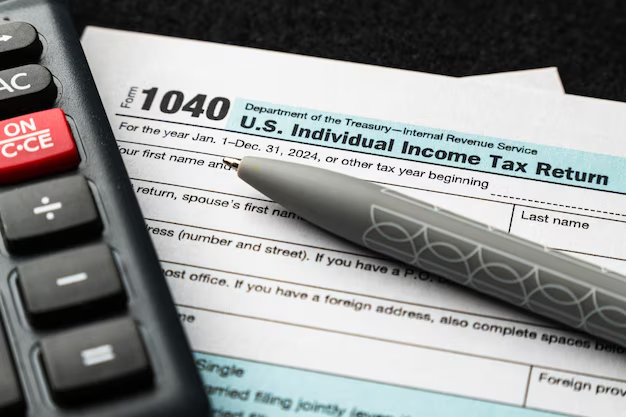Understanding Connecticut's State Income Tax: What You Need to Know
When it comes to managing personal finances, understanding state income taxes is crucial. Residents of Connecticut, known for its picturesque landscapes and vibrant culture, also need to navigate its state tax system. If you're wondering how the state income tax operates in Connecticut, you've come to the right place. This comprehensive exploration will delve into the structure, rates, deductions, and filing requirements associated with Connecticut's state income tax.
The Basics of Connecticut's State Income Tax
Connecticut implements a progressive income tax system, meaning that tax rates increase as income levels rise. This system is designed to impose higher rates on those who can most afford it, ostensibly fostering a fair tax structure. Key points you need to know include:
- Income Tax Rates: Connecticut has seven income tax brackets, ranging from 3% to 6.99%. The rate depends on your income level and filing status.
- Taxable Income: Taxable income includes wages, interest, dividends, and other sources minus allowable deductions.
- Filing Status: Tax rates can vary based on whether you're filing as single, married filing jointly, married filing separately, or head of household.
How the Tax Brackets Break Down
Understanding which tax bracket you fall into is essential for grasping how much you'll owe in state taxes. Let's break this down further:
1. Tax Brackets and Rates
Each tax bracket corresponds to a range of taxable income. Here's a look at the income brackets for Connecticut in 2023:
| Filing Status | 3% | 5% | 5.5% | 6% | 6.5% | 6.9% | 6.99% |
|---|---|---|---|---|---|---|---|
| Single | $0-$10,000 | $10,001-$50,000 | $50,001-$100,000 | $100,001-$200,000 | $200,001-$250,000 | $250,001-$500,000 | Over $500,000 |
| Married Filing Jointly | $0-$20,000 | $20,001-$100,000 | $100,001-$200,000 | $200,001-$400,000 | $400,001-$500,000 | $500,001-$1,000,000 | Over $1,000,000 |
| Head of Household | $0-$16,000 | $16,001-$80,000 | $80,001-$160,000 | $160,001-$320,000 | $320,001-$400,000 | $400,001-$800,000 | Over $800,000 |
2. Calculation of Taxes
Your tax liability is calculated by applying the corresponding rate to each portion of your income that falls within a bracket. For instance, if you're a single filer earning $55,000, 3% would apply to your first $10,000, 5% to the income between $10,000 and $50,000, and 5.5% to the remaining $5,000.
Deductions and Exemptions: Lowering Your Taxable Income
To reduce your tax liability, Connecticut allows various deductions and personal exemptions:
- Personal Exemptions: The amount you can subtract from income to determine taxable income. It varies based on income level and filing status.
- Standard Deduction: Connecticut does not have its own standard deduction amount, but taxpayers can claim personal and dependent exemptions which can offer substantial tax relief.
- Itemized Deductions: While federal itemized deductions apply on federal returns, Connecticut has specific adjustments for its state taxes.
H3: Common Deductions to Consider
- Medical Expenses: Deductible if they exceed a certain percentage of income.
- Property Tax Credit: Available for real estate taxes paid, offering potential relief.
- Educational Expenses: Deductions might be possible for qualifying tuition and related fees.
Filing Your Connecticut State Income Tax
Preparing to file your tax return requires staying informed about the process:
1. Filing Requirements
You're required to file a Connecticut tax return if:
- You're a resident, part-year resident, or non-resident with income from Connecticut sources.
- Your gross income exceeds the minimum threshold for your filing status.
2. Filing Deadlines
The tax filing deadline for Connecticut typically aligns with the federal deadline, which is around April 15th. Extensions are possible, but any tax owed must still be paid by the original due date to avoid interest and penalties.
Practical Tips for Managing Your State Income Tax
It's not just about knowing the rates and brackets. Effective planning can reduce your taxable income and, consequently, your tax bill:
- Maximize Deductions: Keep track of deductible expenses and consider bunching deductions in a single year to surpass the standard limits.
- Utilize Tax Credits: Look out for Connecticut-specific credits that can further reduce your tax liability.
- Seek Assistance if Needed: Use a licensed tax professional or tax preparation software for guidance tailored to your financial situation.
A Visually Distinct Summary Section
Here's a quick recap to help you navigate Connecticut's state income tax landscape:
| 🎯 Tax Planning Tips | Details |
|---|---|
| 📊 Understand the Brackets | Familiarize yourself with the tax brackets based on your filing status. |
| 📉 Lower Your Taxable Income | Utilize deductions and exemptions where applicable. |
| 📅 Meet Filing Deadlines | Ensure timely filing to avoid penalties, paying attention to April 15th. |
| 💸 Consider Tax Credits | Leverage available credits to reduce overall tax liability. |
| 🤝 Seek Professional Help | Engage a tax advisor to optimize your tax strategy. |
Looking Forward: Connecticut's Tax Outlook
Understanding the state's approach to taxation can offer insights into future financial planning:
- Legislative Changes: Tax laws evolve, so staying updated annually is crucial.
- Fiscal Health of Connecticut: The state's budget needs and priorities might influence tax rates and deductions.
Conclusion: Navigating the Connecticut Tax System with Confidence
Arming yourself with the right knowledge about Connecticut's state income tax is essential for making informed financial decisions. Whether you're a lifelong resident or new to the state, understanding how taxes affect your finances can help ensure compliance and optimize your returns. Always consider the resources at your disposal—tax software, professional services, or the Connecticut Department of Revenue Services—to aid in accurate and efficient tax filing.

Related Topics
- Can Business Deductions Reduce Your State Personal Income Tax
- Does Alaska Have State Income Tax
- Does Arkansas Have State Income Tax
- Does California Have a State Income Tax
- Does California Have State Income Tax
- Does Colorado Have a State Income Tax
- Does Connecticut Have a State Income Tax
- Does Ct Have State Income Tax
- Does Delaware Have State Income Tax
- Does Fl Have State Income Tax